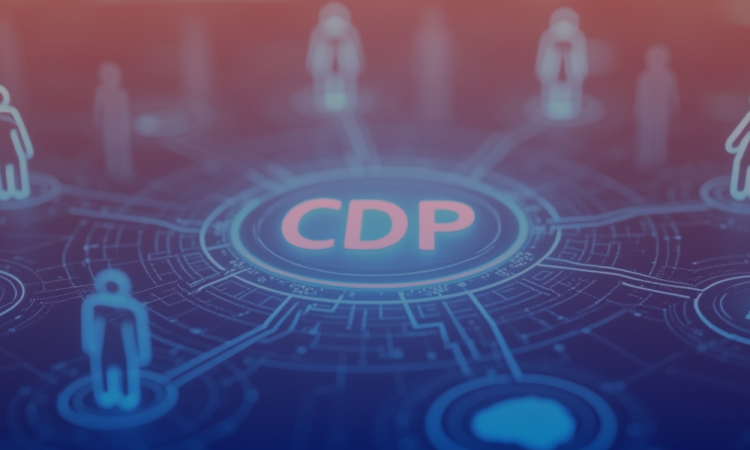By Zoha Peerbhoy | June 2025
Not all loyalty programs are effective.
Some brands use punch card programs, which give customers some kind of reward after they’ve spent a certain amount. Birthday coupons are common, too. Then there are offers like “Buy 10 lattes, get 1 free.” Which is, of course, completely useless for most people.
In a day and age where there are scores of brands that customers can switch between, customer loyalty isn’t easy to pull off. Brands need to use collected data more effectively. They can’t be sending the same promo to everyone in their 20s because they fall in that “segment,” because that’s clearly not how things work.
Relevance now matters more than ever. And Customer Data Platforms (CDPs) help achieve just that.
Let’s break down how CDPs are reinventing customer loyalty.
The Role of a CDP
A customer data platform unifies all your customer data, across apps, emails, web visits, in-store behavior, social clicks, and more, into a single, living, breathing profile.
This profile is updated in real time based on customer behavior. Purchase history is a given, but it also keeps track of what each customer browsed through, what they skipped, or even when they abandoned their cart just before checkout.
This data is important, because not everyone acts the same way while shopping online. While some know exactly what they want and buy it within minutes, others may spend several hours browsing through products, trying to make up their mind. When a customer almost makes a purchase but backs off at the last minute, businesses try to reel them back in with a targeted offer, which tends to work in many cases.
A CDP helps make this happen, because it connects and activates data, helping businesses provide personalized experiences, targeted offers, and loyalty-building moments.
According to Anish Krishnan, Senior Analyst at QKS Group, “Customer Data Platforms are the backbone of modern loyalty strategies by unifying fragmented data into a single, actionable customer view. CDPs empower brands to deliver hyper-personalized experiences that build trust, drive repeat engagement, and turn transactional relationships into long-term loyalty.”
The Drawbacks of Traditional Loyalty Programs
When we think about the way brands communicate with us, we may have mixed responses. While some send notifications too often, others seem spot on. Like alerting you when your favorite brand has released its new collection. Or receiving offers from a food app on a day that you usually stay at home and order in.
What sets them apart is that while some brand interactions seem relevant, others are too frequent, irrelevant, and come across as spam. “10% off” loses meaning when it’s always 10% off.
According to a study published in the International Journal for Scientific Research in June 2024, brands that rely on outdated loyalty tactics without integrating real-time customer data see twice the churn rate compared to data-driven peers.
Customers don’t just want discounts, they want to feel seen, understood, and valued. Which is where CDPs come in.
The Loyalty Flywheel: How CDPs Keep Customers Coming Back
Let’s reimagine loyalty as a loop, not a one-time transaction:
Data → Insight → Personalization → Engagement → Loyalty → More Data
Here’s how it works:
- Your customer browses a skincare product.
- Your CDP notes the visit, correlates it with past purchases, and tags them as “skin-conscious and active.”
- Two days later, they get a personalized email recommending a nighttime serum, not just a generic “25% off sitewide” message.
- They buy. The CDP updates their preferences. Your loyalty score climbs.
Over time, this flywheel creates deeper brand engagement, and the kind of loyalty money can’t buy, but smart data can engineer.
Grover et al. (2025) call this “responsive loyalty,” where data and moments compound to create emotionally intelligent brand relationships.
Real CDP Loyalty in Action
Some brands effectively use CDPs to enhance brand loyalty. Here are some examples of actual data-backed experiences that delivered results:
Pizza Hut Asia
By integrating its loyalty system into a CDP, Pizza Hut doesn’t just reward orders, it predicts cravings. On rainy evenings, known pizza lovers get a push notification: “Rainy day? Pepperoni’s calling.” The result is twice the conversion than generic promos.
Walgreens
Using a CDP, Walgreens provides customers with customized wellness rewards based on both purchase history and prescription schedules. Customers are nudged when they’re due for a refill before they run out. This leads to higher engagement, improved medication adherence, and improved trust.
Rituals Cosmetics
Rituals connects in-store purchases with online behavior. If a customer bought a candle in-store, their CDP ensures the next email sent to them will include complementary scents, not what’s trending. The result? A 300% increase in personalized upsell conversion.
Emotional Loyalty
CDPs also help brands to move past the transactional and into the emotional. Like when the Apple Watch congratulates you when you’ve completed your goals or encourages you to take part in monthly challenges. Or when a bookstore remembers you like mystery novels and reminds you about an upcoming release.
This is how brands can be relevant in a way that feels thoughtful. Balcıoğlu (2025) describes this as hyper-personalized loyalty orchestration.
The Future: Predictive, Generative, Autonomous Loyalty
AI layered onto CDPs offers a host of benefits:
- Predictive churn modeling helps brands spot customers who are disengaging and intervene intelligently.
- Dynamic rewards adjust loyalty offers based on customer value, mood, or moment.
- Generative content helps brands auto-create personalized offers, landing pages, and even storytelling experiences based on data and preferences.
Final Take
Most customers aren’t loyal to a brand. They’re loyal to how the brand makes them feel.
Making customers feel seen and understood is about using data that is delivered at just the right time, on the right channel, and with the right message.
Though a points program may provide certain advantages, implementing a customer data platform will offer significant improvements.
To learn more about customer data platforms, click here.

